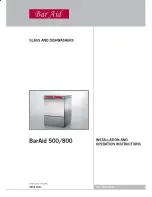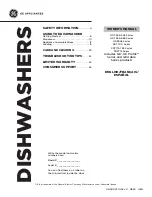
ENGLISH
ENGLISH
GB-27
GB-26
LOADING THE DISHWASHER BASKETS
Recommendation
• Consider buying utensils which are identified
as dishwasher-proof.
• Use a mild detergent that is described as
‘kind to dishes’. If necessary, seek further
information from the detergent manufacturers.
• For particular items, select a program with as
low a temperature as possible.
• To prevent damage, do not take glass and
cutlery out of the dishwasher immediately
after the programme has ended.
For washing in the dishwasher the following
cutlery/dishes
Are not suitable
Are of limited sui-
tability
Cutlery with wooden, horn china or
mother-of-pearl handles
Plastic items that are not heat resistant
Older cutlery with glued parts that
are not temperature resistant
Bonded cutlery items or dishes
Pewter or copper items
Crystal glass
Steel items subject to rusting
Wooden platters
Items made from synthetic fibres
Some types of
glasses can become
dull after a large
number of washes
Silver and aluminum
parts have a tenden-
cy to discolour
during washing
Glazed patterns
may fade if machine
washed frequently
Attention before or after loading the
Dishwasher Baskets
(For best performance of the dishwasher,
follow these loading guidelines. Features and
appearance of baskets and cutlery baskets may
vary from your model.)
Scrape off any large amounts of leftover food.
Soften remnants of burnt food in pans.
It is not necessary to rinse the dishes under
running water.
Place objects in the dishwasher in following way:
1. Items such as cups, glasses, pots/pans, etc. are
faced downwards.
2. Curved items, or ones with recesses, should
be loaded aslant so that water can run off.
3. All utensils are stacked securely and can not
tip over.
4. All utensils are placed in the way that the
spray arms can rotate freely during washing.
NOTE:
Very small items should not be washed
in the dishwasher as they could easily fall out of
the basket.
• Load hollow items such as cups, glasses, pans
etc. With the opening facing downwards so
















































